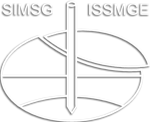Utilisation of geological surplus masses in landfill cover: percolation results from pilot test
Utilisation of geological surplus masses in landfill cover: percolation results from pilot test
To minimize the generation of leachates and thus the contamination of the environment, landfills are usually closed using a cover system which includes a low-permeable hydraulic barrier. For landfills for ordinary and hazardous wastes, a common requirement is that the hydraulic conductivity of this layer must be less than 1x10-9 m/s. Compacted soil layers with natural dry crust clays have been used for this purpose in Norway. However, these soils are not always available within reasonable transport distances of landfills. An ongoing field-scale pilot test conducted at a landfill site in southern Norway therefore aims to evaluate whether a press filter residue from a soil-washing plant or an excavated cement stabilised clay could be used instead of natural-occurring clays. These two materials are normally considered wastes and currently have no application. Their reuse would therefore contribute to reduce the environmental footprint and the costs associated with their deposition in a landfill. Field results for a 6-month period (May 1st to October 31st, 2023) are presented and discussed in this article. These initial results indicate that the cover made of compacted dry crust clay is the most effective, but that the two alternative materials also fulfil the hydraulic conductivity target of 1×10-9 m/s. Overall, field measurements match well characterisation and hydraulic conductivity tests conducted in the laboratory. However, the difference in hydraulic conductivity between the dry crust clay and the reused materials is smaller in the field than in the lab. The environmental aspects regarding the reuse of these materials are yet to be evaluated.
E. W. Anes; S. Ritter; T. Pabst; A. C. Stridal; N. G. Nilsen; K. Hovland; G. Okkenhaug
18th European Conference on Soil Mechanics and Geotechnical Engineering (ECSMGE2024)
E - Environment, water and energy
